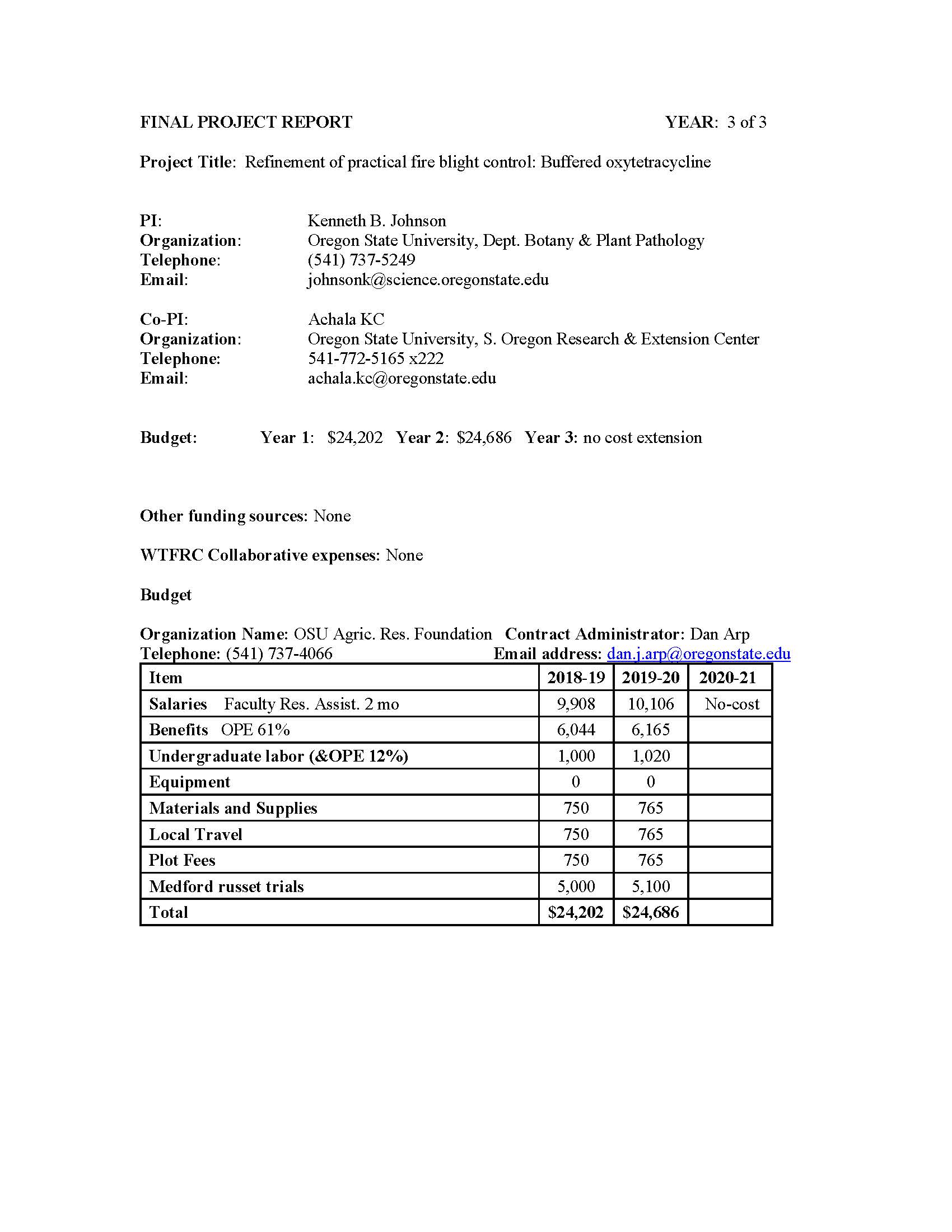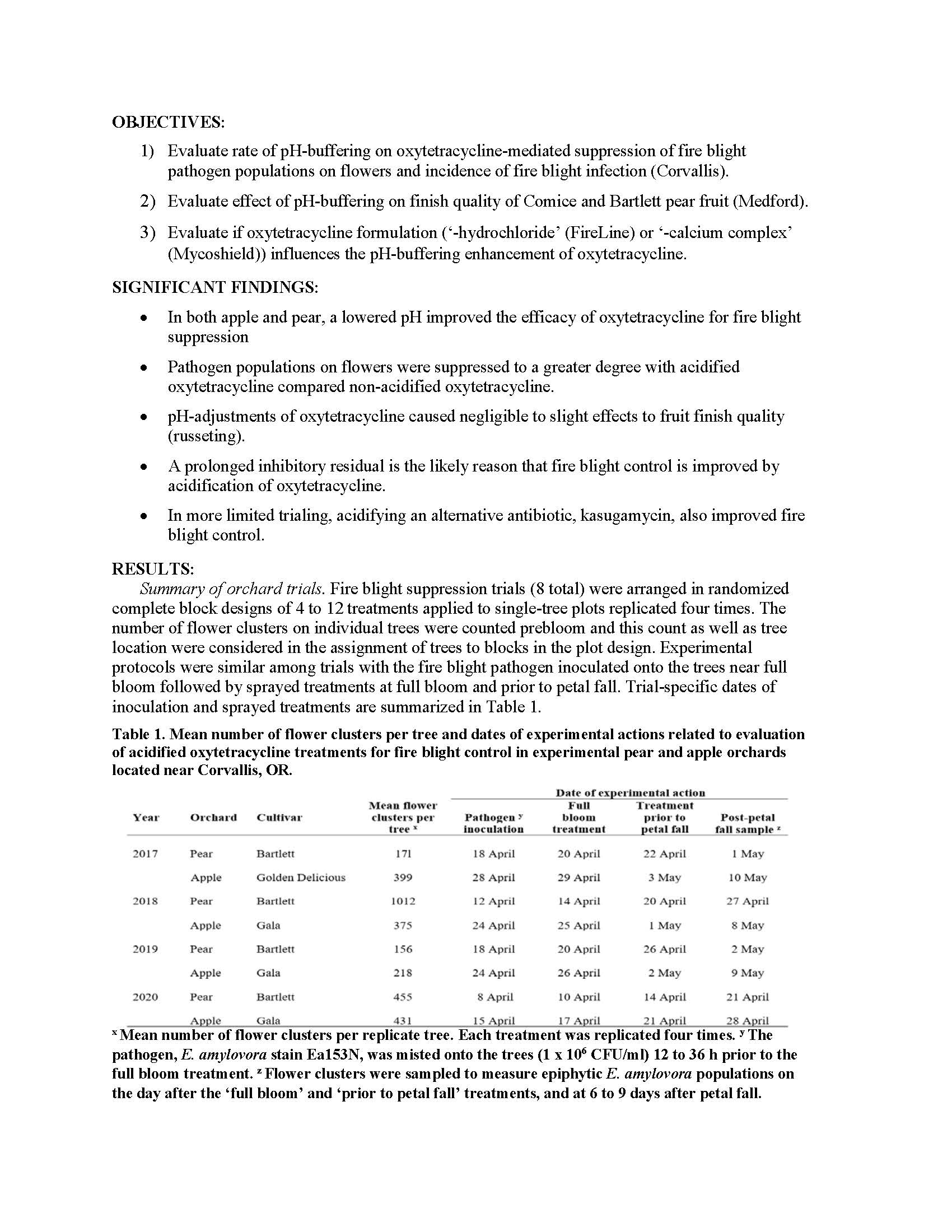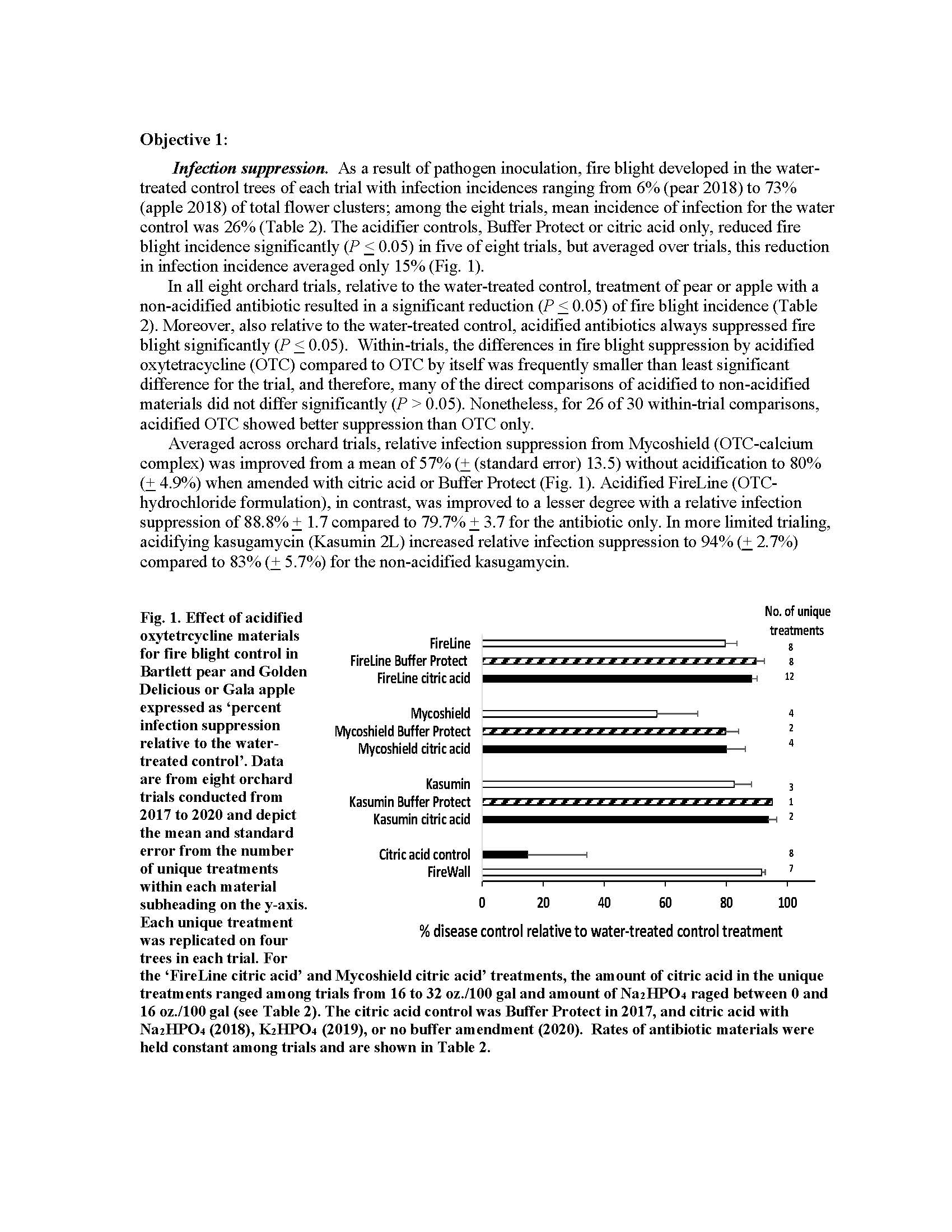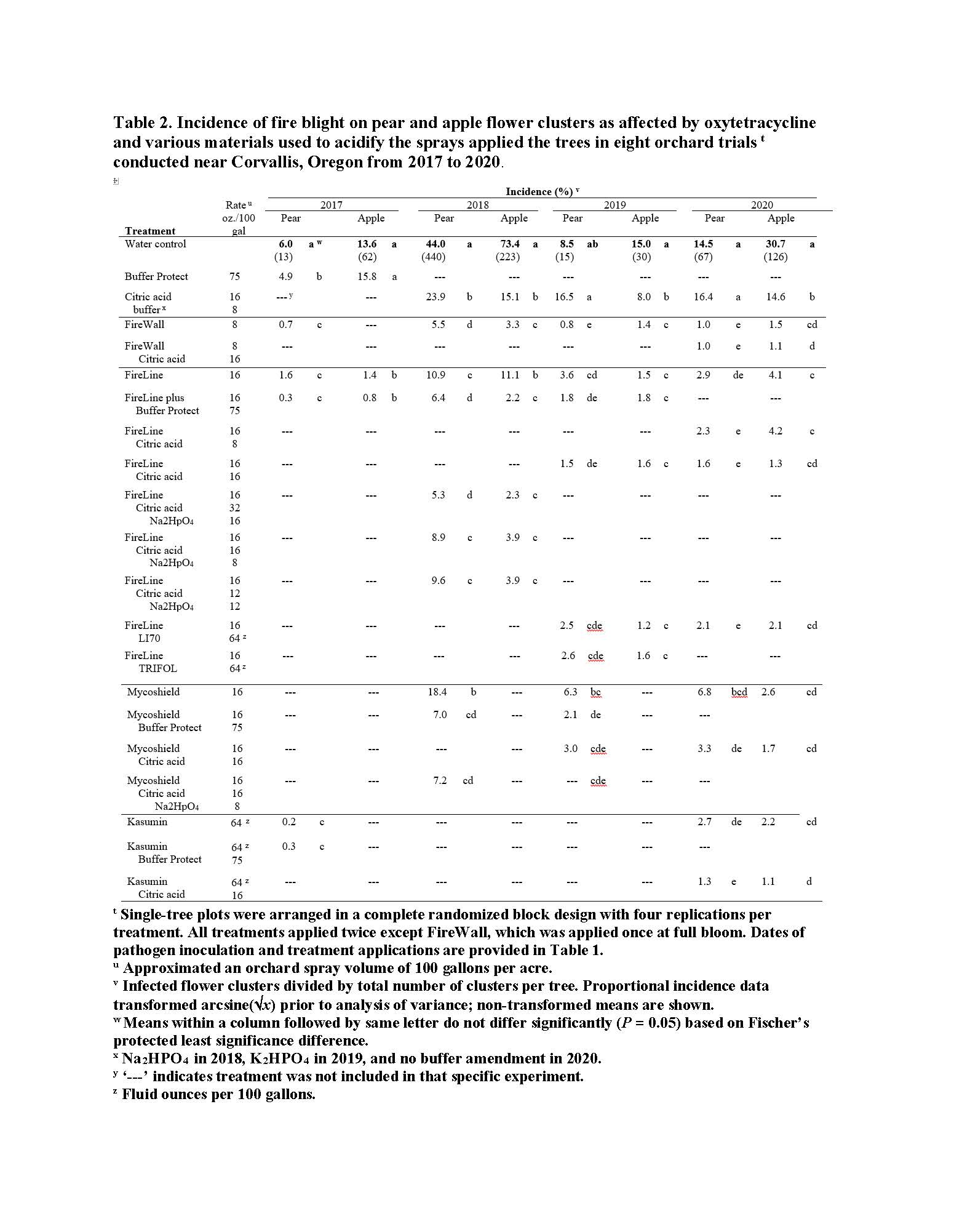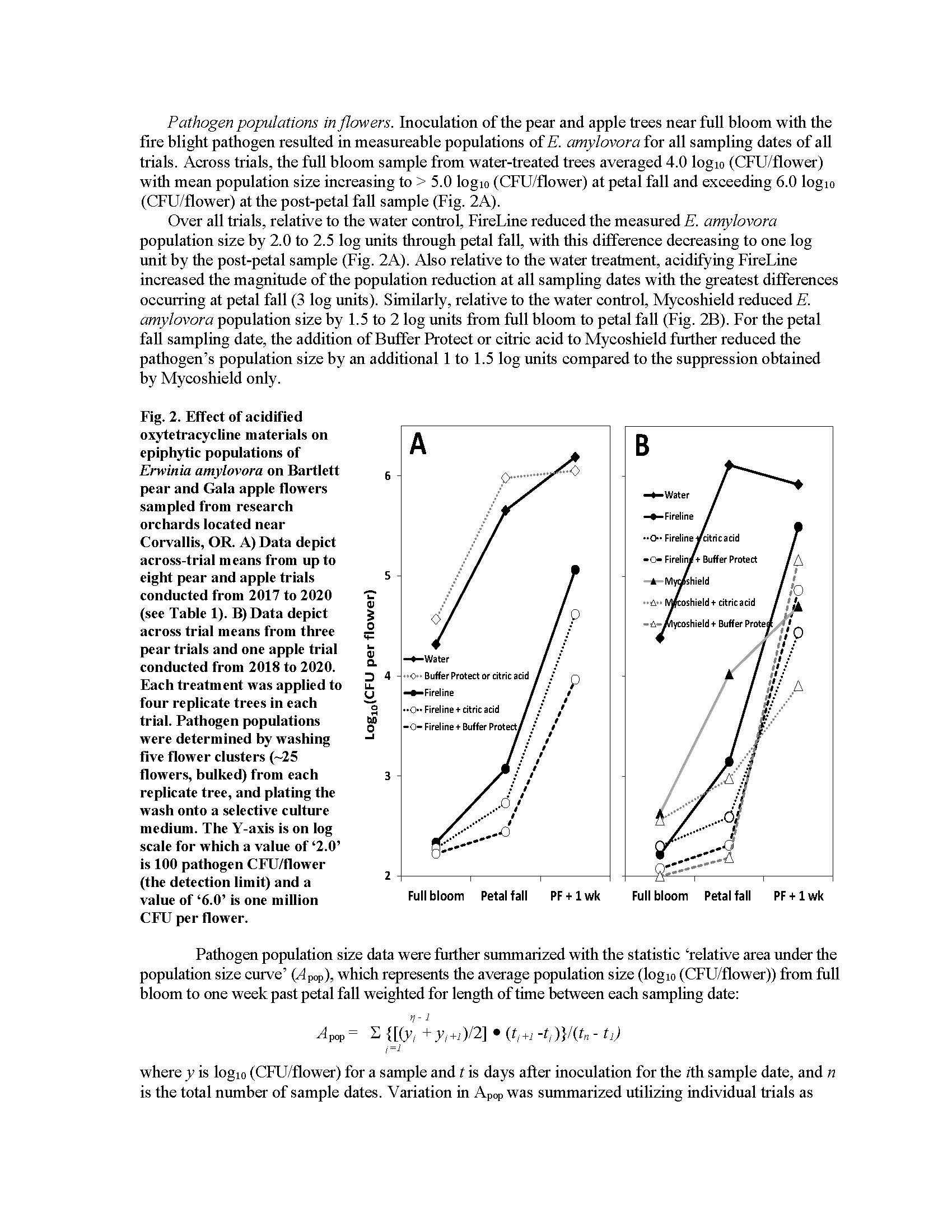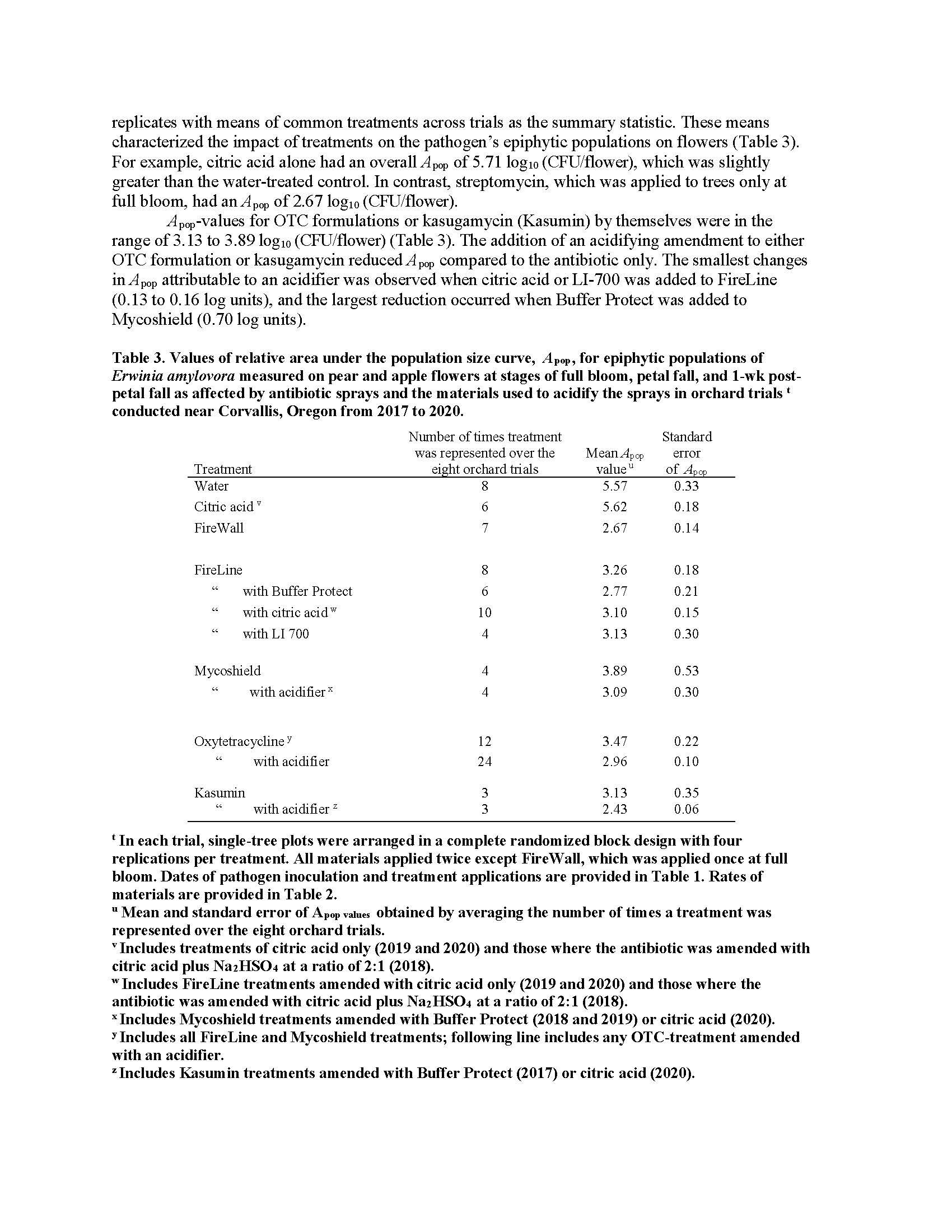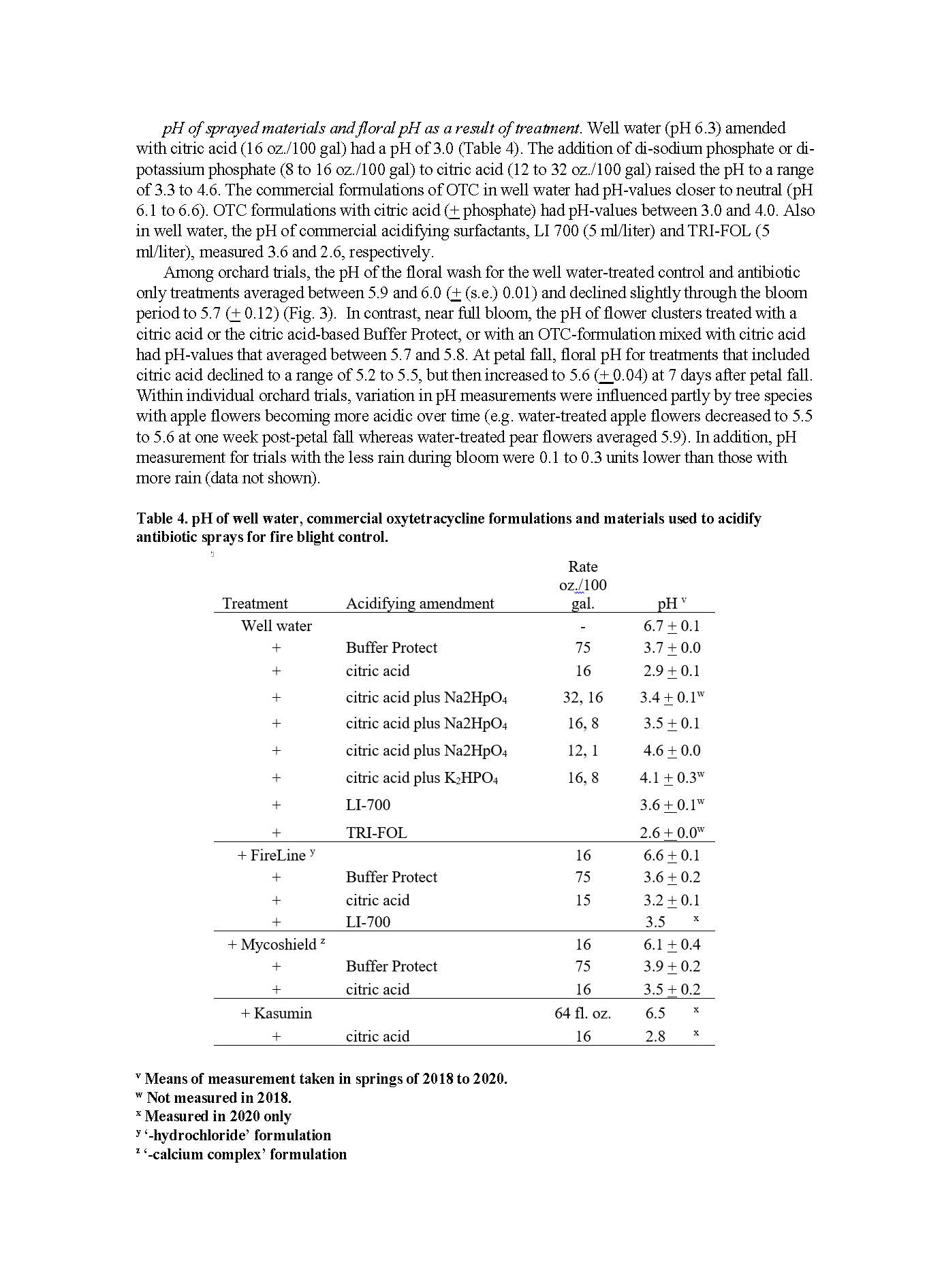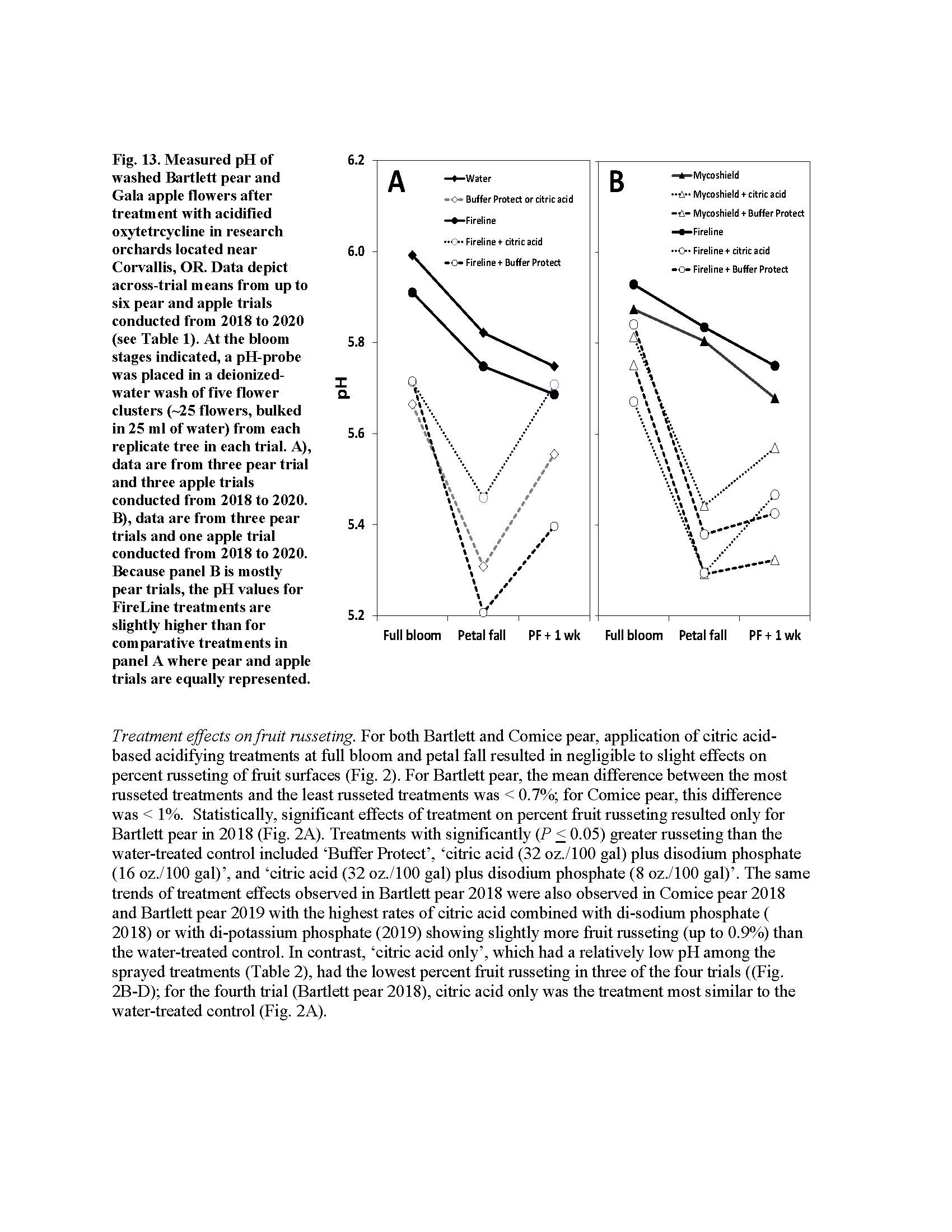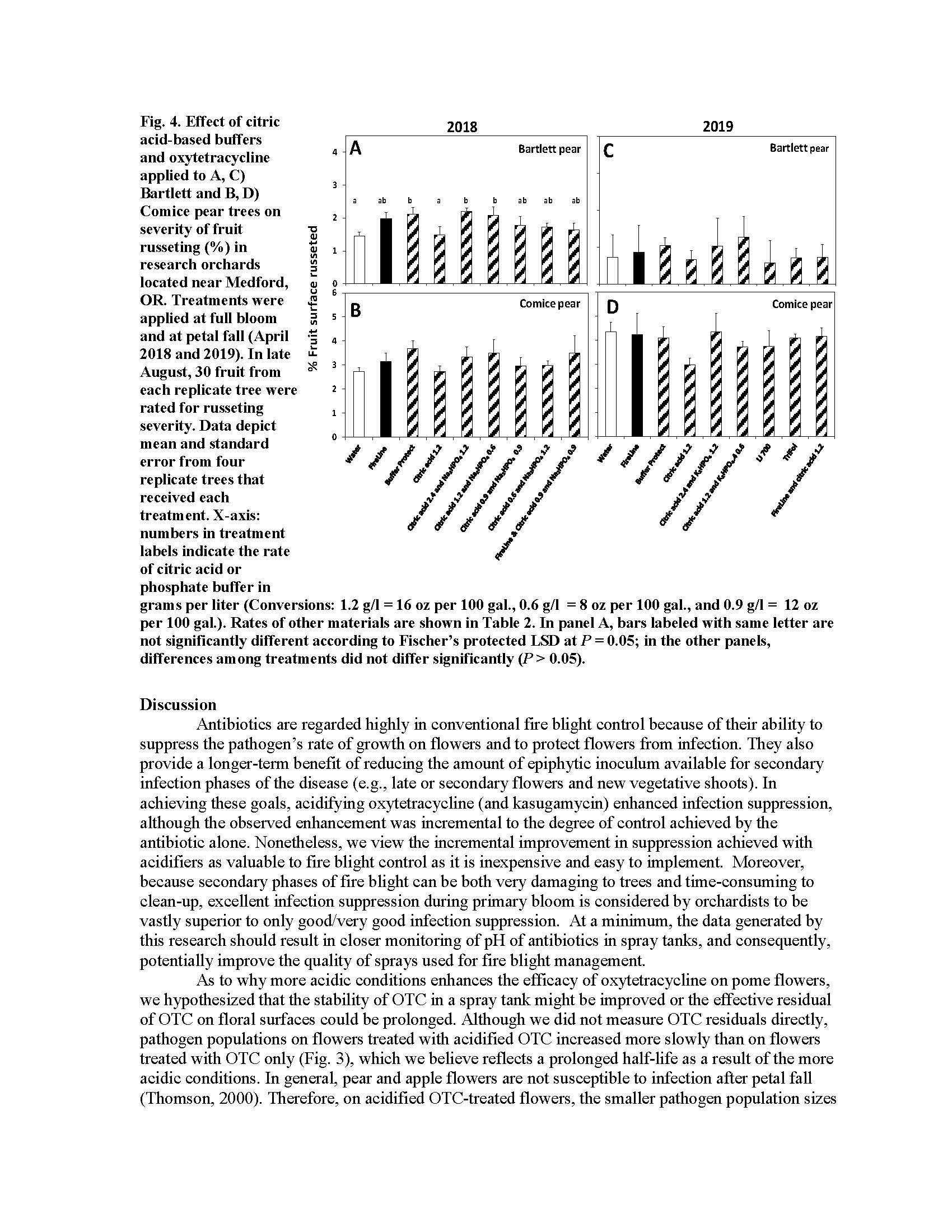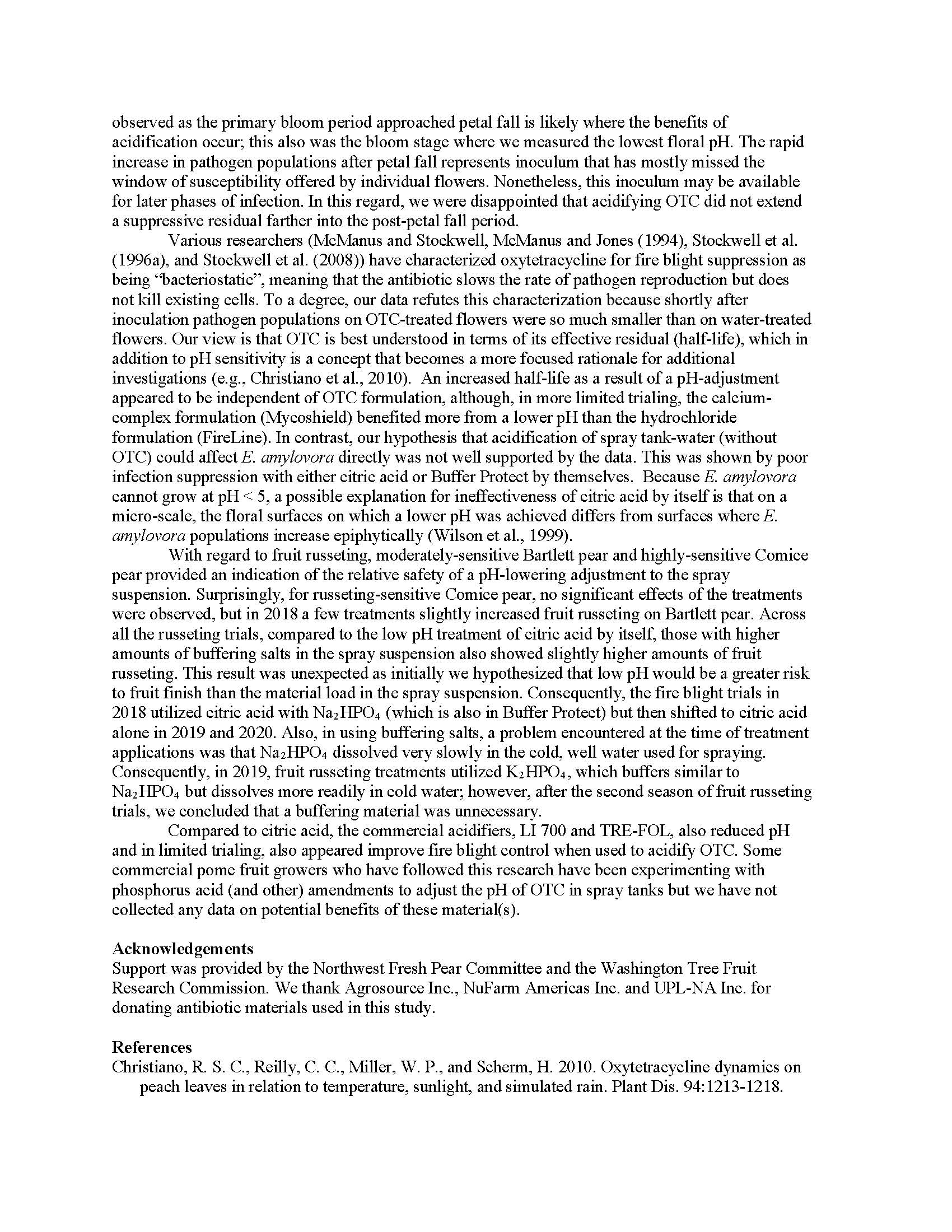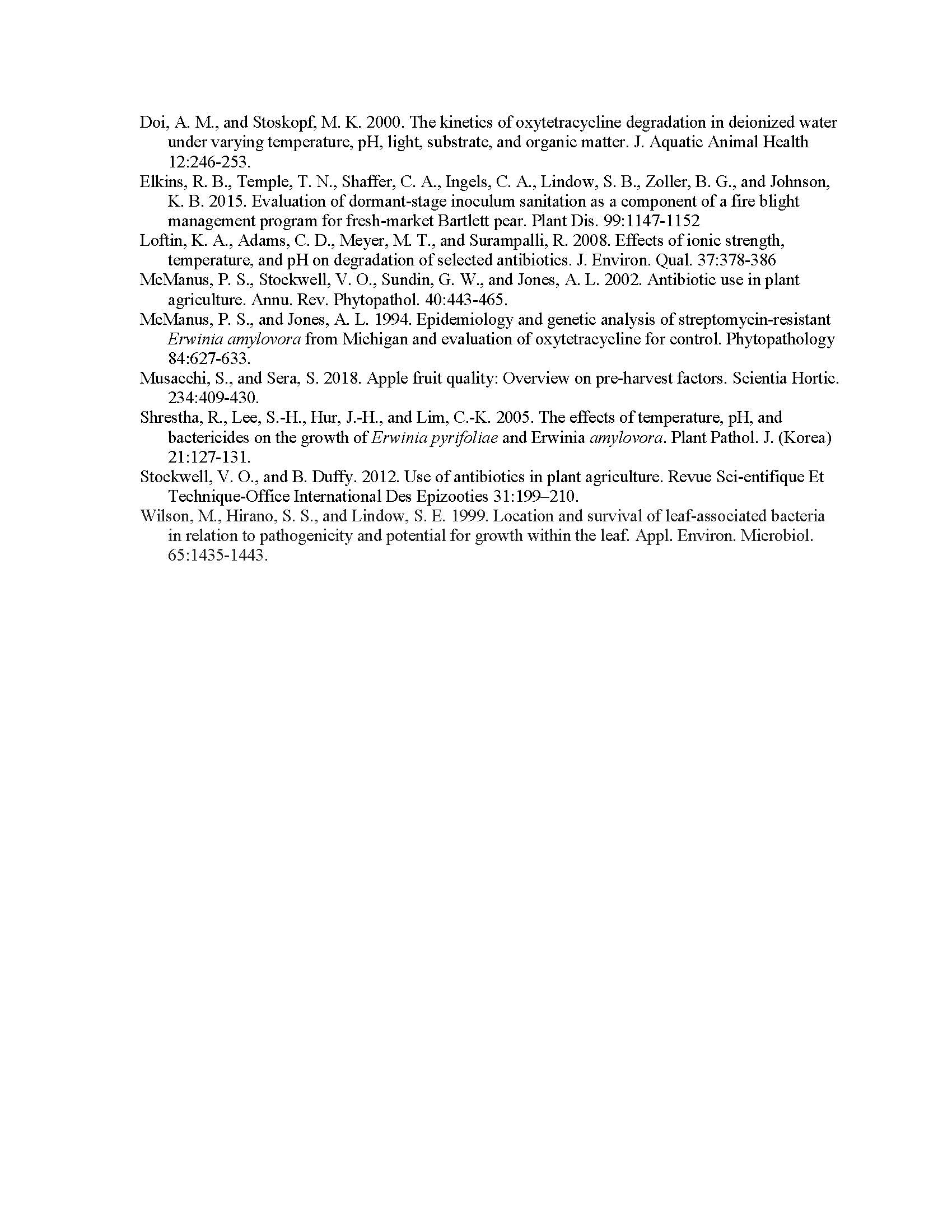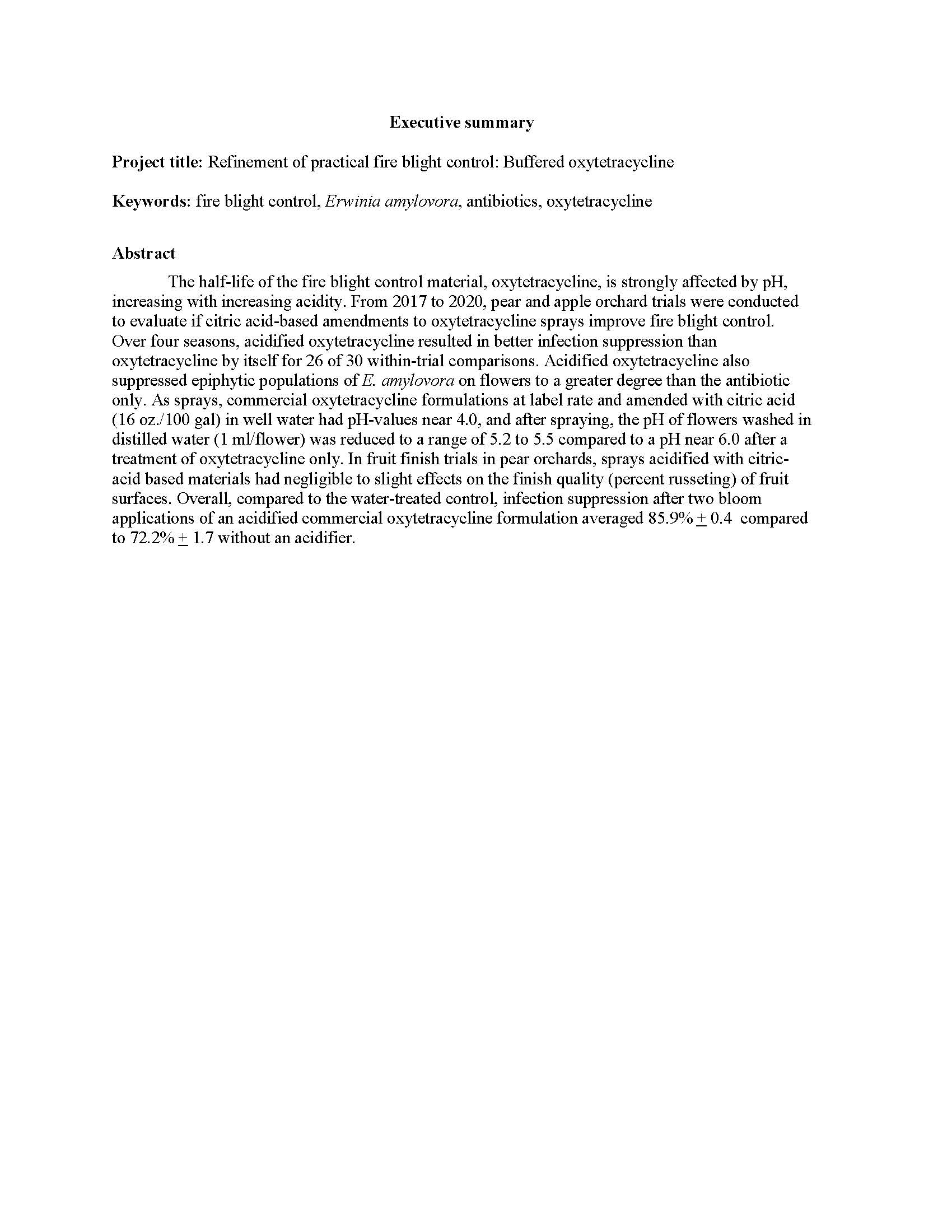Refinement of practical fire blight control: Buffered oxytetracycline
Author: Kenneth B. Johnson, Achala KC
Published: 2021
Summary: The half-life of the fire blight control material, oxytetracycline, is strongly affected by pH, increasing with increasing acidity. From 2017 to 2020, pear and apple orchard trials were conducted to evaluate if citric acid-based amendments to oxytetracycline sprays improve fire blight control. Over four seasons, acidified oxytetracycline resulted in better infection suppression than oxytetracycline by itself for 26 of 30 within-trial comparisons. Acidified oxytetracycline also suppressed epiphytic populations of E. amylovora on flowers to a greater degree than the antibiotic only. As sprays, commercial oxytetracycline formulations at label rate and amended with citric acid (16 oz./100 gal) in well water had pH-values near 4.0, and after spraying, the pH of flowers washed in distilled water (1 ml/flower) was reduced to a range of 5.2 to 5.5 compared to a pH near 6.0 after a treatment of oxytetracycline only. In fruit finish trials in pear orchards, sprays acidified with citric-acid based materials had negligible to slight effects on the finish quality (percent russeting) of fruit surfaces. Overall, compared to the water-treated control, infection suppression after two bloom applications of an acidified commercial oxytetracycline formulation averaged 85.9% + 0.4 compared to 72.2% + 1.7 without an acidifier.
Keywords:

